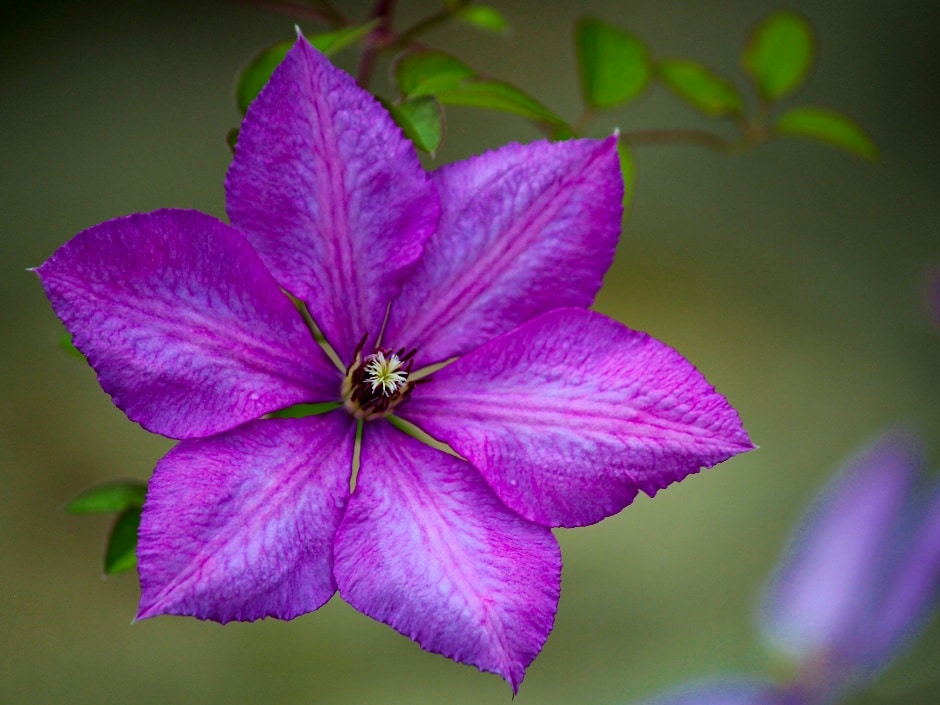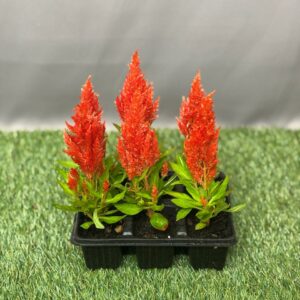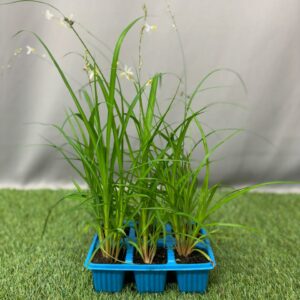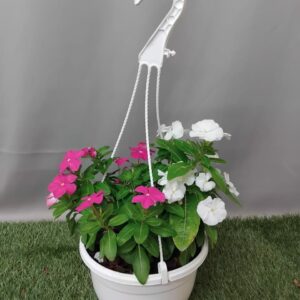Clematis – Queen of the vines
Trees, hedges and borders

Clematis – Queen of the Vines
Clematis are often referred to as the “queen of the vines”, a term that is easy to understand when these spectacular climbers are in full bloom. Given the right growing conditions and care, clematis can be relied on to produce masses of flowers year after year.
“In South Africa clematis fare best if they are started out in pots before being transplanted into the garden.”
“Clematis are climbing plants so they need a structure to climb up from the moment they are planted.”
“Clematis should be watered frequently in dry weather, especially if they are grown in pots.”
Clematis is a large, varied genus of evergreen and deciduous plants which produce a spectacular display of flowers on delicate tendrils. The clematis genus contains over 280 varieties and belongs to the Ranunculaceae botanical family. Almost all varieties of clematis are climbers, with the exception of a few herbaceous species which work well in garden borders. The word clematis comes from the Greek “klema”, which means vine, a clear reference to their climbing nature. Although they grow well in all parts of South Africa they tend to produce the best displays in areas with the coldest winters.
By planting a variety of clematis hybrids you can ensure that you have masses of blooms – along with their attractive seed heads – from early spring until late autumn. You can achieve this by mixing varieties which flower at different times (for more information, see the types listed under “Pruning made simple”). Clematis is available in a wide range of colours – from pale pink and white to intense purple, burgundy and cherry shaded varieties – and includes hybrids with single, double and mixed blooms. Many varieties, such as C. armandii and C. integrifolia, are also sweetly scented, providing a wonderful perfume in the spring and summer garden.
How to plant Clematis
In South Africa clematis fare best if they are started out in pots before being transplanted into the garden. Most clematis breeders advise growing them in a pot for at least the first three years. Fill the pot with loamy, well drained soil and plenty of organic matter like compost. Add some extra bone meal to boost the root development of your new plant. Clematis will fare best if planted in a spot where the crown of the plant receives plenty of sun, but the roots are shaded from the worst heat of the day. You can also keep the roots cool by surrounding your plants with a thick layer of bark mulch. However, don’t apply mulch right next to the stems, as this can cause the stems to rot.
When planting clematis, remove the lower leaves of the plant so that the bottom 10cm of the stems are completely bare and plant the root ball at least 12cm below the surface of the soil. The reason for this deep planting method is to ensure that you have a back-up plan should some of the shoots above the ground wilt or die back. If this happens, the buds below the soil will send out new shoots to replace those that have died back.
Support is essential
Clematis are climbing plants so they need a structure to climb up from the moment they are planted. Try mounting three canes in a pot to form a pyramid shade for your clematis to climb up. Alternatively, clematis will also climb up walls, a trellis, or nearby trees or shrubs. If you would like your clematis to climb up a nearby tree make sure you plant it at the edge of the tree canopy where it will receive water and sunlight. Then use a rope to guide the clematis towards the tree so that it can begin to climb.
Caring for your Clematis
To get the most out of your clematis, you should fertilise them once every two weeks during the growing and flowering season (spring to summer). Feed with a high nitrogen fertilizer like Seagro, Nitrosol or Multifeed Classic. You can stop feeding them when the plants become dormant (usually around April or May). Clematis should be watered frequently in dry weather, especially if they are grown in pots. They will grow best in moist, but not soggy soil, as this can cause their roots to rot.
Pruning made simple
The best time to prune your clematis depends on the variety concerned. Clematis fall into one of three groups:
- Group 1 – Those that flower in spring on old growth,
- Group 2 – Those that flower twice a year on both old and new growth, and
- Group 3 – Those that flower in summer on new growth.
Clematis in group 1 (for example, C. cirrhosa, C. macropetala and C. montana) should not be pruned. You can simply tidy them up after they have finished flowering.
Clematis in group 2 (the large flowered hybrids like ‘Nelly Moser’, ‘Miss Bateman’ and ‘Duchess of Edinburgh’) should be given a light pruning after each flowering flush. Remove weak growth as well as dead leaves and shoots and re-tie bare steams to the support.
Clematis in group 3 (for example, C. florida, C. integrifolia, C. texensis and C. viticella) should be pruned back hard to just above the lowest joint of the plant.
The exception to this rule is the first year after you have planted your clematis. All varieties can be cut back by half a few months after planting to encourage bushier and healthier growth. After pruning, feed your clematis with a high potassium fertiliser to encourage good growth and foliage in the next flowering season.
Dealing with pests and diseases
What is clematis wilt?
If clematis is not securely attached to a support structure, the stems can become damaged, which provides a perfect breeding ground for fungal attacks. Once a fungus attacks the plant, the affected stems start to die back and collapse, a condition referred to as “clematis wilt”. Small flowered clematis varieties are usually resistant to clematis wilt, but it is fairly common among the large flowering varieties. If clematis wilt occurs it is vital to remove and destroy the affected stems. Cut off all wilted stems, removing at least 3cm of healthy looking stem along with the wilted section – or remove the whole stem if it is entirely wilted. The fungus that causes clematis wilt spreads easily so make sure you destroy the affected stems and disinfect any cutting tools after use.
What is eating my clematis?
Snails and slugs are the most common culprits when it comes to damaging your clematis plants. They are especially fond of munching on new growth, so it’s best to surround your clematis plants with snail bait in early spring before these pests have the chance to wreak havoc. Aphids, white flies and red spider can also attack clematis – inspect the foliage regularly and spray with a general insecticide if necessary.
Did you know? The pastel shaded varieties of clematis tend to produce more intensely coloured blooms if they are grown in a semi-shady position, as full sunlight causes the petals to fade.
Planting guide
| PLANTING | TRANSPLANTING | FLOWERING | PRUNING | FERTILISING | |
| JANUARY | X | ||||
| FEBRUARY | X | ||||
| MARCH | X | X | |||
| APRIL | |||||
| MAY | |||||
| JUNE | X | ||||
| JULY | |||||
| AUGUST | X | X | |||
| SEPTEMBER | X | X | X | ||
| OCTOBER | X | X | X | ||
| NOVEMBER | X | X | X | ||
| DECEMBER | X | X |




